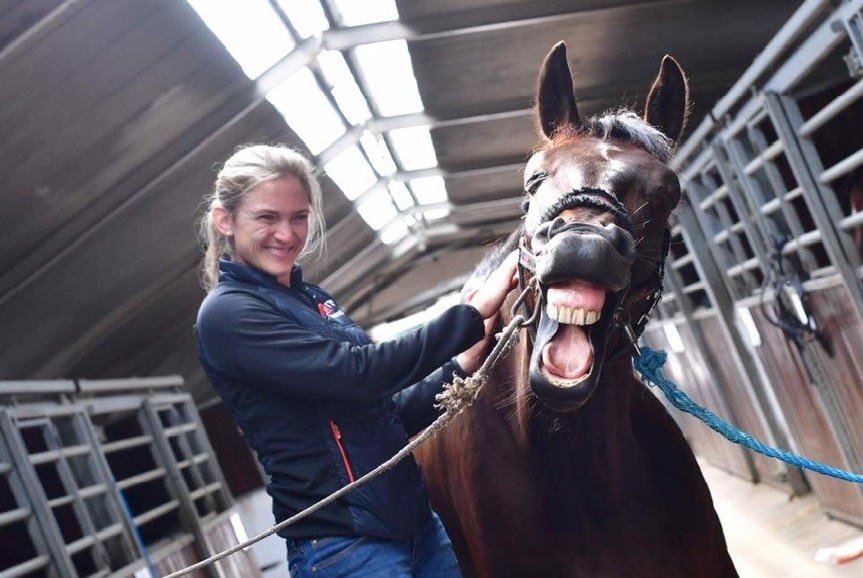Why Equine Therapy is Becoming a Preferred Option for Emotional Health
Why Equine Therapy is Becoming a Preferred Option for Emotional Health
Blog Article
Evaluating the Efficiency of Laser Treatment in Equine Therapy for Injury Rehabilitation
The evaluation of laser therapy's efficiency in equine injury rehab hinges on numerous elements, including recovery time, pain reduction, and cells regrowth. Vets often observe premium end results with laser treatment contrasted to standard methods, positioning it as a vital aspect in equine care.
Understanding Laser Therapy
Laser treatment has actually ended up being an essential tool in veterinary medication, especially in the treatment of equine conditions. Recognized for its non-invasive nature and efficiency, laser treatment involves the application of specific wavelengths of light to boost tissue repair work and reduce swelling. This restorative method is significantly favored for its ability to increase the recovery process in steeds dealing with a selection of bone and joint injuries and chronic problems.
The key system behind laser treatment is its ability to improve cellular functions. When laser light passes through the skin, it is taken in by mitochondria, the powerhouse of cells, which results in raised production of adenosine triphosphate (ATP) This biochemical power boost promotes cellular repair work and regrowth. Additionally, laser treatment promotes vasodilation, enhancing blood flow and oxygen distribution to broken cells, thus quickening recovery.
In equine medication, laser therapy is specifically beneficial for conditions such as tendonitis, osteoarthritis, and injury healing. The strategy is admired for its pain-relieving buildings, permitting horses to restore wheelchair and function much more quickly. Vets also appreciate its minimal negative effects contrasted to various other therapy methods, making it a dependable and risk-free choice for equine treatment.

Just How Laser Treatment Functions

Upon absorption, these photons cause a collection of biochemical changes, boosting mitochondrial function and resulting in increased adenosine triphosphate (ATP) manufacturing. This increase in ATP accelerates mobile metabolic process, promoting cells repair work and regeneration. In addition, laser therapy modulates inflammatory actions by impacting cytokine degrees and minimizing oxidative stress and anxiety, consequently reducing pain and swelling.
An additional considerable aspect of laser treatment is its function in improving microcirculation. The treatment advertises vasodilation, enhancing blood flow and oxygen distribution to damaged cells (Equine Therapy). This look what i found facilitates the elimination of cellular particles and sustains the expansion of fibroblasts and collagen synthesis, crucial for wound recovery
Medical Proof
The effectiveness of laser treatment in equine therapy has actually been substantiated through various medical research studies, showcasing its restorative prospective throughout a variety of problems. A study performed by Turner et al. (2012) showed that steeds treated with low-level laser treatment (LLLT) for ligament injuries showed increased recovery compared to those getting traditional treatments.
Similarly, research study by Johnson and colleagues (2015) concentrated on equine muscle mass injuries, disclosing that laser therapy significantly quickened muscle mass fiber regrowth and lowered muscle tightness. Clinical assessments have actually revealed that laser therapy can alleviate persistent conditions such as osteo arthritis.
Vet Insights

Vets additionally value the convenience of laser treatment. It can be used for a wide range of problems, from surface injuries to deeper musculoskeletal injuries. Dr. Emily Brown highlights its utility in treating problems like tendonitis and osteo arthritis, where standard treatments frequently fail. She mentions that laser treatment can be customized to the certain requirements of each equine, guaranteeing ideal outcomes.
Furthermore, vets value the ability to incorporate look at this website laser therapy with various other therapy methods. This multimodal strategy can improve overall therapy efficacy, providing a comprehensive solution for equine recovery. Such endorsements from seasoned specialists highlight the expanding approval and application of laser therapy in equine medication.
Practical Considerations
A vital element of executing laser therapy in equine therapy entails recognizing the useful factors to consider that guarantee its efficacy and security. First and primary, it is essential to pick the suitable laser tool, as different kinds differ in wavelength, power, and infiltration depth. Equine Therapy. Veterinarians need to be fluent in these specifications to customize treatment procedures effectively to every injury kind
Furthermore, the regularity and period of laser therapy sessions require mindful planning to take full advantage of restorative benefits while decreasing any prospective damaging effects. Constant surveillance of the steed's response to treatment can guide needed changes in the therapy program. Developing a secure and controlled environment during therapies is additionally important to stop unintended direct exposure to laser emissions, which can harm both the steed and the trainer.
Training and qualification of workers providing laser therapy are extremely important to ensure proper strategy and to support safety and security standards. Furthermore, keeping precise documents of each session, consisting of laser setups and observed results, is crucial find this for examining the total performance of the therapy and for making data-driven decisions.
Final Thought
Laser therapy has emerged as an effective modality in equine injury rehabilitation, offering substantial advantages in recuperation time, discomfort alleviation, and tissue healing. Clinical studies emphasize substantial improvements in conditions such as tendonitis and osteoarthritis, associated to boosted mobile function and enhanced ATP production. Vet monitorings support these findings, highlighting remarkable outcomes contrasted to standard therapies. For optimal outcomes, constant monitoring and customized therapy protocols continue to be crucial in leveraging the complete potential of laser treatment in equine treatment.
Report this page